Helen Liang – 13-Posture Tai Chi for Harmony, Strength & Balance
$95.00
External three-unification refers to the shoulders aligning with the hips, the elbows aligning with the knees
Module 1: Your Transformative Journey Into the Exploration of Tai Chi’s 13 Postures Begins With the Fundamentals to Build Your Body’s Optimal Alignment, Strength & Balance
The practice of Tai Chi is the physical interpretation of the Tao philosophy — a teaching built upon the belief in unity of all things found in the universe.
In this opening session, you’ll learn the pivotal, spiraling, coiling force of Tai Chi as it first emerges in form. You’ll learn how this opening Tai Chi movement activates the Yin and Yang energies of the body and moves Qi throughout your being… and dive deep to discover the role of the mind in harmonizing the Yin and Yang polarities.
Helen will teach the fundamental elements of Tai Chi Standing Posture (Zhan Zhuang ), which is essential for building proper body alignment and cultivating your reservoir of energy.
Module 2: Discover the Power of Stillness — The Source of Movement & Potentiality to Align the Cervical Vertebrae, Increasing Blood Flow for Clearer Thinking
You’ll review the Standing Posture, the first and second posture that you learned in the last module, and be introduced to the third posture — Ba He Liang Chi (White Crane Spreads Its Wings). As part of this posture, you’ll contemplate the image of the crane… in Taoism the red-crested white crane is a symbol of immortality and wisdom and is associated with heaven. The third posture helps bring clarity and calm to the mind and spirit. When you have a calm mind and you’re in a state of Yin, you generate fluid movements and power.
The third posture also contemplates the energetic skill of Peng — the first and foremost energy principle of the 13 postures, which allows the entire body to feel strong and solid, yet flexible and energized with springlike vitality.
In the fourth posture, Lou Xi Ao Bu (Brush Knee Push), you’ll explore the classic Tai Chi teaching of Wu Guo Bu Ji, meaning “not excessive” or “deficient,” and you’ll learn how balance and harmony can be maintained in your life when you don’t let things reach a critical point.
Module 3: The Secret of Wholeness — Bringing the Opposites Together — the Dance of Yin & Yang to Express & Build Your Energy for a Life of Ease
After reviewing the first four postures, you’ll move onto the fifth posture, Shou Hui Pi Pa (Playing Lute), and the sixth posture, Lu Ji Shi (Roll Back and Squeeze).
You’ll learn that when performing a form, your hands, legs, and feet are in constant transition between Yin and Yang in a continuous flow, mirroring the ongoing change in the universe that’s brought forth by the dance between the two opposites. You’ll also learn that inherent in every Tai Chi posture is an “opening and closing,” a powerful way to express the dance of Yin and Yang in your body.
The fifth posture is one movement that vividly demonstrates the notion of “opening and closing” and helps open up important energy gates in the body to promote smooth circulation of Qi in the spine, the Governing Vessel meridian, and out through the arms.
You’ll explore the mystic teaching of allowing and yielding through the energy of Lu. By contemplating on the energy of Lu, you’ll learn about realizing peace through non-resistance (acceptance) when you allow the events of life to unfold naturally. Once you’ve mastered the way of yielding, you’re empowered to resolve challenges by learning the technique of Ji (Squeeze).
Module 4: Be as Water — Soft, Flexible & Adaptable — Cultivating Your Ability to Adapt to Different Life Situations
After a review of the last six postures, you’ll learn Shang Bu Ban Lan Cui (Step Forward to Deflect, Parry, and Punch) and the eighth posture, Peng Lu Ji An (Ward Off, Roll Back, Squeeze, and Push).
Lao Zi teaches in the Tao Te Ching that soft overcomes hard. He uses water as a metaphor for this assertion: water is soft and flexible, but also has the power to erode the hardest materials like rock and metal.
You’ll explore the teaching of living with softness and flexibility through the practice of the seventh posture. To be like water also means that you’re able to adapt to different circumstances. The technique An, taught in the eighth posture, cultivates your ability to survive many different circumstances by adapting.
Module 5: Empower Your Life Through the Acceptance of the Natural Rise & Fall of Energy — the Way of the Universe — Inspiring You to Gracefully Embrace Life’s Ups & Downs
In this powerful session, you’ll learn the ninth, tenth, and eleventh postures — Yun Shou (Cloud Hands), Dan Bian (Single Whip), and Xia Shi (Snake Creeping Down).
Lao Zi teaches in the Tao Te Ching that everything around us undergoes a constant flow of transformation and change. All things obey the law of rhythm — expansion and contraction, rising and falling. This is the constant of nature, the Tao.
The continuous flow of the ninth, tenth, and eleventh postures mirrors the cyclic nature of the Tao’s endless motion and constant change, inspiring you to gracefully embrace life’s ups and downs.
These postures and movements help build coordination, flexibility, strength, and balance.
Module 6: Balance & Harmony Created Through Unification of the Inner & Outer So Your Body Feels Perfectly Connected
You’ll review the postures you learned in the past five module, then learn two more — Shi Zi Chui (Cross Punch) and Shang Bu Qi Xing (Step Up, Seven Stars). You’ll also learn the first two techniques of posture 13, Cai Lie Zhou Kao (Pluck, Split, Elbow, Strike)
A fundamental teaching in Tai Chi is internal three-unification and external three-unification. Internal three-unification refers to the heart unifying with the mind, the mind unifying with Qi, and Qi unifying with force.
External three-unification refers to the shoulders aligning with the hips, the elbows aligning with the knees, and the hands aligning with the feet. Through posture 12, you’ll learn how to harmonize, unify, and align the body.
Module 7: Integrating the 13 Postures — Supple as Water, Strong as the Mountain — So You Can Accomplish More With Minimum Effort & Maintain Inner Tranquility in Your Everyday Life
In this final session, you’ll review all the postures taught in the course and learn the final two: Zou (Elbow — Strike) and Kao (Body — Strike). The techniques of Zou and Kao demonstrate two distinct kinds of power that cultivate a calm, grounding centeredness.
Tai Chi is founded on a teaching that harmonizes opposite energies. “Movement starts from the stillness and tranquility of the mind; the Jin (power/strength) should be rooted in the feet, generated from the legs, controlled by the waist, and expressed through the fingers,” these are the lines most often used to describe how power should be expressed in Tai Chi.
Helen will teach that the above sequence should be followed when you emit power (Fa Jin ) and that suppleness and relaxation is the source of power and strength.
After learning the last two techniques, you’ll practice the form from the beginning to the end, weaving together the essential features of Tai Chi 13 Postures to experience a free flow of the entire form.
More courses from this author: Helen Liang
Be the first to review “Helen Liang – 13-Posture Tai Chi for Harmony, Strength & Balance” Cancel reply
Related products
HYPNOSIS - NLP Courses
HYPNOSIS - NLP Courses
HYPNOSIS - NLP Courses
Tom O’Connor NLP – Task Decomposition The “Magic Power of Goal Getters”
HYPNOSIS - NLP Courses
Niraj Naik – Renew Your Body & Reprogram Your Reality With SOMA Breathwork




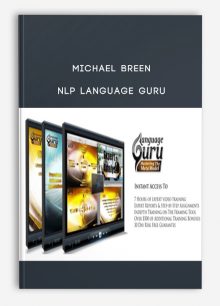
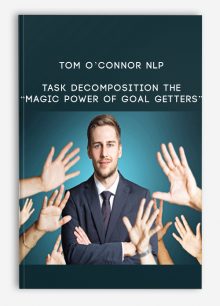
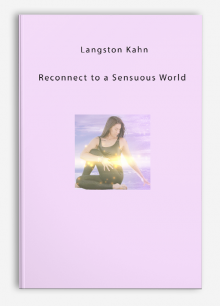

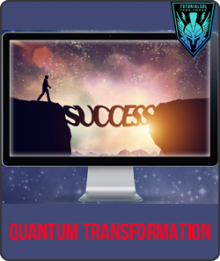
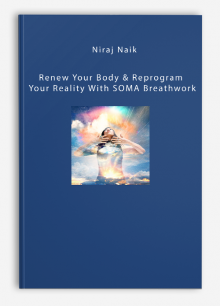
Reviews
There are no reviews yet.